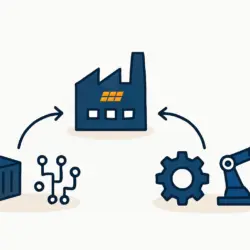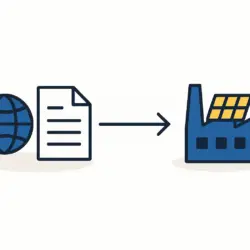From Coal to Kilowatts: Advanced Czech energy storage Hub Transforms Former Mineshaft
In a powerful symbol of the ongoing energy transition, Czech energy company ČEZ is pioneering a 4MW to 8MW energy storage project at a former mineshaft in the Ostrava region. The facility will be developed at the Jeremenko mineshaft in the Moravská Ostrava district, breathing new, green life into a site once dedicated to coal mining.
Project Details of Czech energy storage
The construction of this ambitious project will be managed by Škoda JS, a subsidiary of ČEZ. The plan goes beyond simple energy storage, envisioning a comprehensive energy hub complete with photovoltaic panels and a charging station for electric vehicles.
The core objective is to integrate multiple energy sources and storage solutions at the Jeremenko mineshaft site, a landmark of the former Ostrava-Karviná mining district. The project’s innovative design includes a battery storage system with a capacity of 4MW to 8MW, a photovoltaic power plant leveraging the solar panel manufacturing process, and a cutting-edge hydrogen storage system.
The Jeremenko mineshaft site was specifically selected for its unique potential to combine these renewable energy sources and storage technologies. The project serves as a powerful demonstration of how post-industrial landscapes can be repurposed for sustainable energy initiatives, turning relics of the fossil fuel era into beacons of a cleaner future.
“The Jeremenko mineshaft site offers a unique opportunity to combine various energy sources, including photovoltaic panels, batteries, and hydrogen storage, to create a comprehensive energy system,” said Jan Kříž, Deputy Minister of Environment for the Czech Republic. “This project represents a significant step forward in our efforts to transition to renewable energy.”
Environmental and Financial Benefits of Czech energy storage
The positive impacts of this project are expected to be substantial. Environmentally, it is projected to reduce carbon emissions by approximately 3,500 tonnes annually. Financially, it could generate savings of around CZK 5 million (USD 227,000) each year.
“The integration of renewable energy sources at the Jeremenko mineshaft will significantly reduce carbon emissions and provide financial benefits,” noted Pavel Tykač, co-founder of Czech energy company Seven Energy. “This project showcases the potential of combining renewable energy and storage technologies to achieve both environmental and economic goals.”
A key feature of the project is its integration with the Moravská Ostrava municipal heating plant, which currently relies on natural gas. During periods of low electricity demand and high renewable generation, surplus electricity will be used to charge the storage system. This stored energy will then be deployed to power the plant’s operations and supply heat to the local district heating network, creating a smart, circular energy system that enhances grid stability. For energy consumers across Europe, including homeowners and tenants in Germany, such projects are vital for supporting a stable grid as more intermittent renewables come online, ultimately contributing to more reliable and predictable energy prices.
Challenges and Future Prospects for Czech energy storage
Embarking on such a multifaceted project is not without its hurdles. The initiative faces significant technical and regulatory challenges, particularly concerning the seamless integration of diverse energy sources and storage technologies while ensuring the absolute safety and stability of the entire system.
This project is a cornerstone of ČEZ’s broader strategy to pivot towards renewable energy and decrease its dependence on coal-fired power plants. The company is actively exploring other large-scale initiatives, such as its plan to build solar plants in Northern Bohemia on the sites of former power stations. These efforts are complemented by other energy storage projects, including a 10MW project at the Tušimice power station and a 4MW project at the Ledvice site, building on the experience from a previously completed 1MW/1.2MWh battery system at the Tušimice plant.
The trend of repurposing former mines is gaining momentum. In a related development, the UK-based company Gravitricity is also planning a 4-8 MW energy storage project in a Czech mineshaft, using an innovative gravity-based system. This demonstrates a growing international interest in leveraging the unique geography of former mining regions for new energy solutions.
The Jeremenko project aligns perfectly with the Czech Republic’s national energy policy, which aims to substantially increase the share of renewables in the country’s energy mix. As the Czech Republic continues to champion energy storage, it highlights the immense potential for innovative green energy integration. Projects like this, and the development of new manufacturing hubs like the impressive CTP solar electronics facility, signal a robust and forward-thinking approach to clean energy. You can stay updated on all developments by following the latest Czech Republic solar news.
If you are inspired by these advancements and want to deepen your understanding of the solar industry, from production to implementation, consider enrolling in our free e-course to start your journey.



